Screams and Phobias
(a classical example of phobias in famous art work)
An Excess of Phobias and Manias
The Scream a Symbol of Phobic Reactions
The Scream (1893) by Edvard Munch (1863-1944)
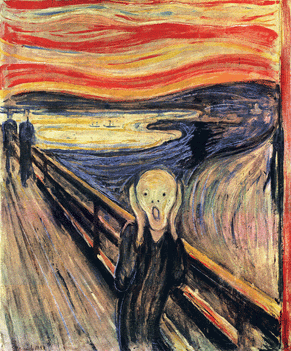
Perhaps the best known of all of Munch's works is The Scream, (located in the National Gallery, or Nasjonal-galleriet, in Oslo, Norway) one of the paintings that reflect his childhood trauma, occasioned by the death of his mother and sister from tuberculosis.
Damaged by childhood and by appalling family tragedies, the Norwegian painter Edvard Munch was obsessed by sickness, insanity, and death much of which he apparently expressed in this painting.
Munch Describes the Fundamental Elements of The Scream
Edvard Munch described "The Scream", in one of his notes: "I was walking along the road with two friends. The sun was setting. I felt a breath of melancholy. Suddenly the sky turned blood-red. I stopped, and leaned against the railing, deathly tired; looking out across the flaming clouds that hung like blood and a sword over the blue-black fjord and town. My friends walked on–I stood there, trembling with fear. And I sensed a great, infinite scream pass through nature."
Some other renditions of "The Scream" have been used to express terror or fear; as shown below.
What we fear comes to pass more speedily than what we hope.
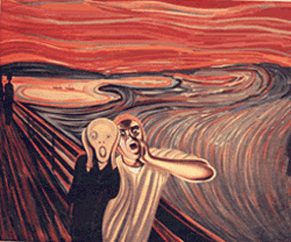
Man's task is to become conscious of the contents that press upward from the unconscious. As far as we can discern, the sole purpose of human existence is to kindle a light in the darkness of mere being.
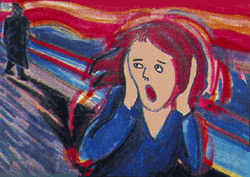
This image was used in a German television-program schedule about the terror that a woman was experiencing regarding a man whom she believed was stalking her.
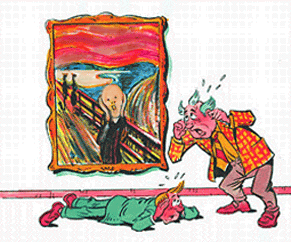
There are artists who suggest that there are side effects from "The Scream".
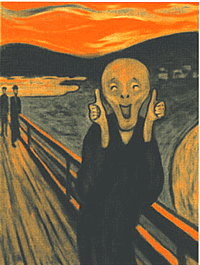
Then there are those who like to play around with "The Scream" for other interpretations.
